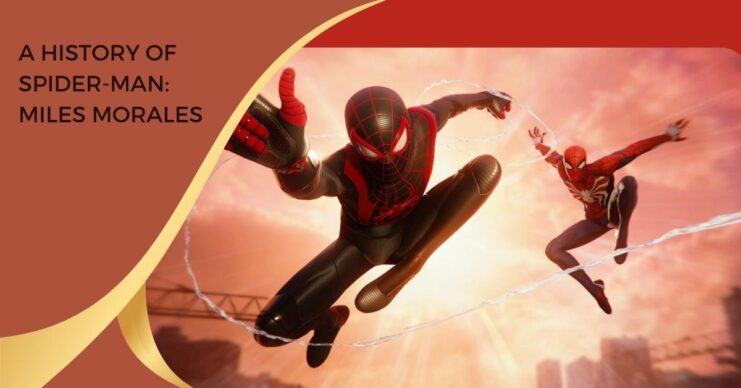Sure, Spider-Man: No Way Home may be all people are talking about right now, but allow Kelechi Ehenulo to remind us about the newest incarnation, Miles Morales, and his rich, exquisite history – not to mention a breathtaking debut in Spider-Man: Into the Spider-Verse, and the upcoming sequel, Spider-Man: Across the Spider-Verse (Part One).
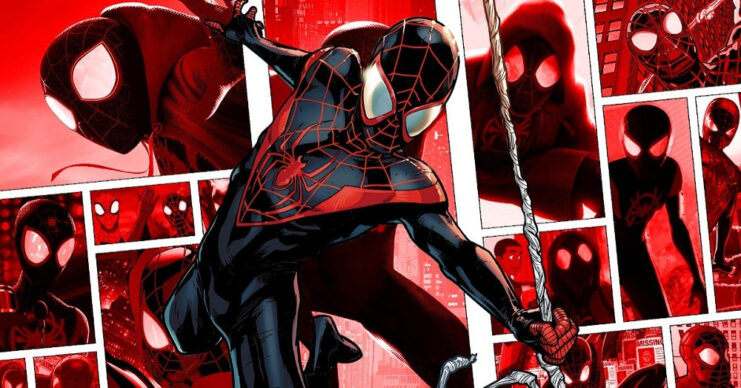
Before he took that euphoric ‘leap of faith’, before he graced our screens with one of cinema’s most defining moments in Into the Spider-Verse, Miles Morales’s Spider-Man began from an inspiration – Barack Obama. With America on the brink of electing its first African American President in 2008, the then Editor in Chief at Marvel Comics, Axel Alonso, wanted to reflect the change. He acknowledged “it was time to take a good look at one of our icons,” for their planned re-imagining of their Ultimate Marvel comics.
Following in the footsteps of an established, iconic character with fifty-nine years’ worth of history is not an easy feat. After all, the story of Peter Parker – a symbolization of teenage anxieties and working-class struggles – are reasons why fans have universally connected with him. But the endearing aspect of Miles Morales is a legacy not shaped by emulating what’s gone before. He represents a powerful recontextualization of modern superheroism that’s inspired by the past but is not beholden to it.
His existence symbolizes that anyone can wear the mask, with his Afro-Latino roots and cultural identity defining his every move. And as the first Black Spider-Man, it’s a statement that speaks louder than ever in how representation allows a community to feel seen because with “great power”, Miles is the hero the world needs right now.
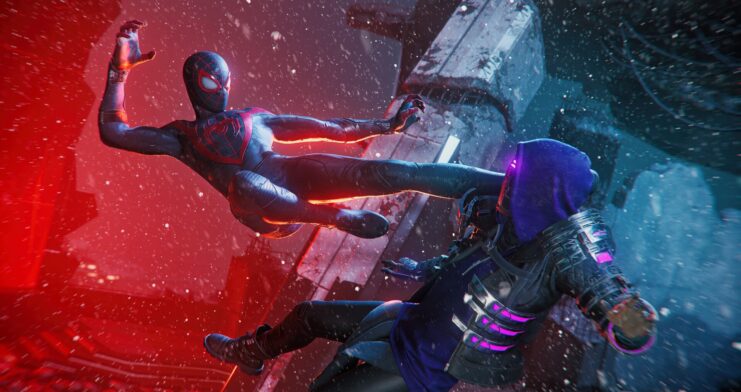
Created by writer Brian Michael Bendis and artist Sara Pichelli (with input by Alonso), Miles Morales made his debut in Ultimate Fallout #4 in August 2011. Following the death of Parker in Death of Spider-Man, Miles assumes the vacant role by wearing a Spidey Halloween costume. His first call to action was to go toe-to-toe in a fight with the villainous Kangaroo. His introduction was brief.
He faced some tough criticism, reflecting the fears that it was too soon for a new Spider-Man while the world was still mourning the loss of the original. But it was the shape of things to come for the young web-slinger and the first chance to step out of Spider-Man’s shadow.
Miles would make his next appearance in the Ultimate Comics: Spider-Man, allowing Bendis to mould Miles’s origin story. Here, he would establish Miles’s community and Brooklyn upbringing – his parents Rio Morales and Jefferson Davis, his Uncle Aaron Davis (aka The Prowler) and his best friend Ganke Lee. Like Peter Parker, Bendis injects the same coming-of-age conflicts and anxieties that a reluctant individual would face if gifted with superhuman powers from a bioengineered spider bite.
The difference here is the reality it’s rooted in. This is Miles Morales in a different universe. His desires to be a normal teen are conflicted by his father’s distrust of superheroes. But the weight and responsibility of Peter’s death was enough of a pull to try. With the help of S.H.I.E.L.D. (after facing off with Electro), they reward him with a modified Spider suit using a distinct color coordination that would officially define his succession – red and black.
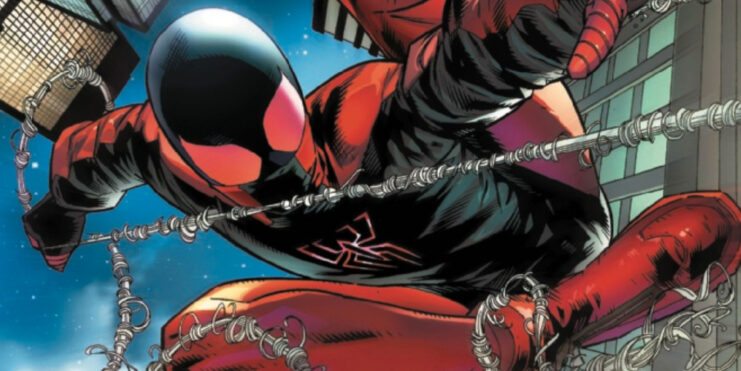
With plenty of heart and energetic vigour, Miles’s upward rise has only propelled him to greater heights, mastering the full extent of his powers (including invisibility and bio-electric energy) and eventually joining the Ultimates and S.H.I.E.L.D. For as many friends and allies he has gained (Spider-Woman, Gwen Stacey, Mary Jane Watson, May Parker, and Captain America), the villains have equally made their presence known.
Venom (Venom War), Scorpion (Ultimate Comics) and Mysterio (Spider-Men) have been significant challenges in his training and development. Miles has even faced the world-ending threat from Galactus in Cataclysm and other multiversal enemies. But when it matters, Spider-Man always returns to its grounded source, exploring the impact of being a superhero on our protagonist’s life. And Miles undergoes several personal heartbreaks, including the death of Uncle Aaron.
But it’s in Miles’ second solo comic outing, Miles Morales: Ultimate Spider-Man, where strides are made. It sees the unexpected return of Parker, despite the lingering questions about his re-appearance amongst the living, as a pivotal moment for the pair as they unite to see off the return of Norman Osborn/Green Goblin.
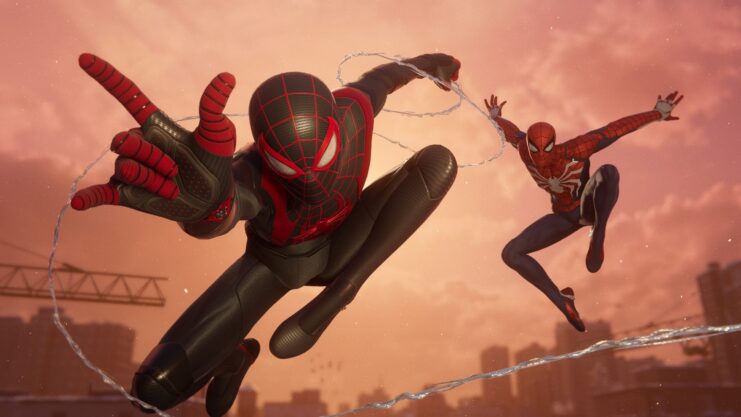
The issue comes full circle, which is an analogy not lost on its readership. But there’s a respect that affirms validation and recognition, knowing the city of New York is in good hands. And what better way to acknowledge Miles’ own stamp of authority than for Parker to pass the mantle as the ultimate seal of approval: before heading into retirement he offers Miles his web shooters.
Miles Morales is the empowering embodiment on the continuance of a legacy. He may be Parker’s replacement in one universe, but it emphasizes on imagining greater whilst being yourself. That spirit and ethos have always been a testament to the character’s success and why he’s a worthy addition to the Marvel Universe.
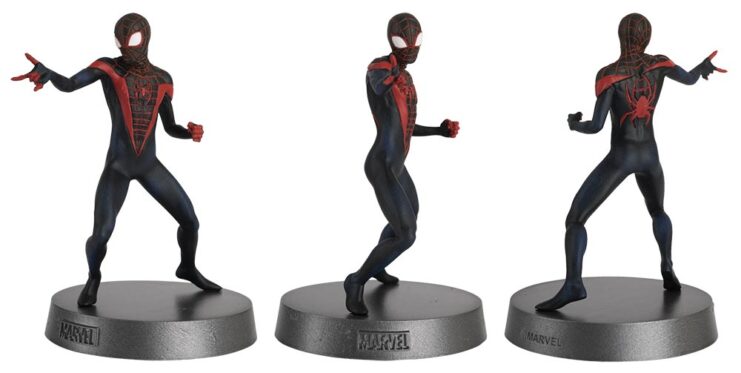
With all the No Way Home hype, there’s no reason we can’t show some Miles Morales appreciation, right? Check out our Marvel Comics Heavyweights Collection, which includes our amazing, new-look Spidey, as well as some other well-known icons from the world of Marvel Comics.

